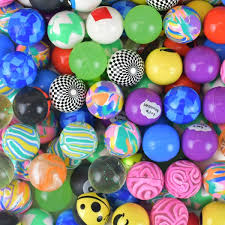
In the book The End of Average, Todd Rose explains the importance of noticing the “jaggedness” of other people’s talents. He writes that as teachers, we can best discover how to use our students’ strengths and address their learning gaps if we become aware of their jagged learning profile. Paying close attention to this type of individuality prevents us from being “caged in by arbitrary, average-based pronouncements” of who we expect our students to be or become.
During my first day of class with pre-service teachers, we explore differentiation through the lens of a Jagged Learning Profile, identifying our own jaggedness in a variety of learning categories. The sharp edges created from mapping learning profiles defines the shape of our learners and helps us draw out their self-identified talents and struggles.
Here is a concise, step-by step process for using the Jagged Learning Profile in a variety of contexts:
Step 0: Depending on the age of your learners, share the TEDx video The Myth of Average to set the context for a Jagged Learning Profile. The story is suitable for upper elementary through college-aged students.
Step 1: Ask students to make a list of “ways you learn.” Since I work with preservice teachers, we use the language of diversity, differentiation, and content standard specific terms: verbal, visual, spatial, social, comprehension, computational, symbolic, metaphor, analogy, large motor, small motor, etc. I usually do this as a class and fill a whiteboard with options.
Step 2: Direct students to select 8-10 items from the whiteboard that jump out at them. Which categories are meaningful for describing how you learn? Your barriers to learning? This usually results in a natural variety of both strengths and weaknesses, based on their perceptions of the ways they learn, or the ways they feel they are “smart.” You might also put the categories on slips of paper and ask students to draw at random.
Step 3: Using large sheets of butcher paper, students trace each other’s bodies.
Step 4: Students list the categories for ways they learn down the middle or side of their body, then rate themselves as high or low in each category by drawing a dot on an imaginary continuum between “low” and “high.”
Step 5: Students connect the dots, noticing the “jagged” nature of their own learning.
Follow up: Students can then participate in a gallery walk, noticing similarities and differences in their peers’ jaggedness. They might also reflect in writing or in a video response to what they learned about their own learning profile. In my course, I give students prompts for additional reflection about their own learning journey, barriers to learning, the learning culture that best supports success, and other items that I want to model for them to repeat in their own secondary classrooms.
There are some fun ways this initial activity can be extended or modified:
- Use it for your content as a way to track progress. Instead of categories of ways students learn, substitute knowledge or skills from your content or an upcoming unit. Students can rate themselves as a form of pre-assessment. During a learning cycle, guide students to reassess their learning profile with a different colored dot to see how their learning has impacted their profile. Repeat this again at the end of the learning cycle as a self-assessment.
- Instead of using butcher paper, use overhead transparencies and a smaller body sketch. Ask students to overlay their jagged learning profile with another student’s (or 3! or 4!). Ask students to notice the differences and similarities in their group.
Students in my course consistently share the way this activity helps them notice learning as a process of combined ways of knowing, rather than naming strengths and weaknesses. When we visualize jagged profiles, we see learning as a collection of edges that explain us, rather than areas to cover up or avoid. Teachers who participate in the process with their students also model a classroom culture of transparency and show students how to celebrate their sharp edges.
More Resources to check out:
https://www.psychologytoday.com/us/blog/what-the-wild-things-are/201307/the-myth-the-average
Rose, T. (2016). The End of Average: How To Succeed in a World that Values Sameness. Allen Lane: Great Britain.


